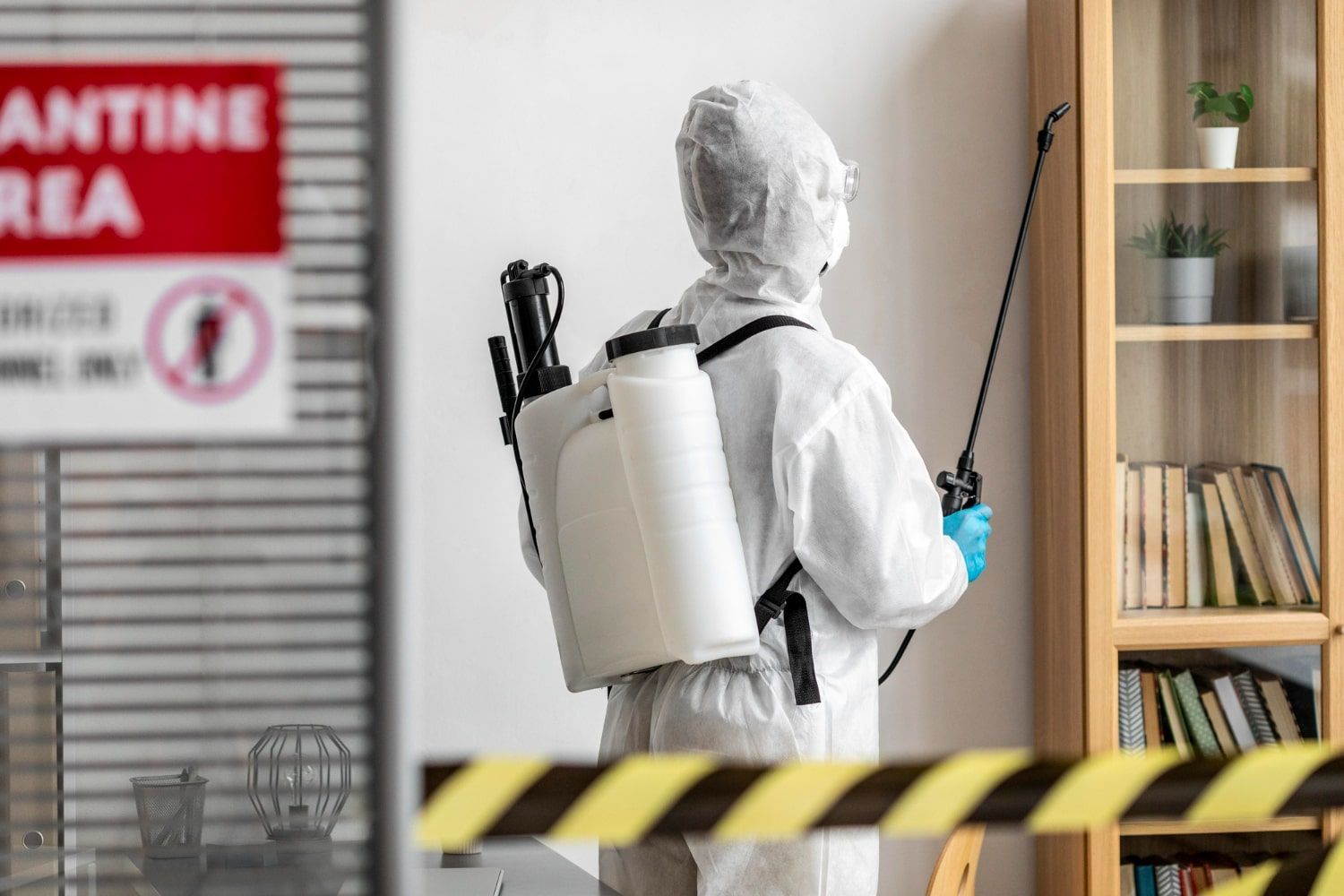
Today, let’s dive into the question, “Is your indoor environment making your pet sick?” We love our pets, and most of us do whatever it takes to make our pets’ lives enjoyable and healthy. We provide them with toys, walks, and the best food to keep them healthy. If they get sick, we take them to the vet to determine the cause and help them feel better. In today’s article, I will delve into the issue of how our homes can make our pets sick. When we are talking about the indoor environment and drivers of illness, we need to consider three primary toxin sources: mold, toxins (mycotoxins), and volatile chemicals (VOCs).
Toxins are defined as poisonous substances that are specific to the metabolic activities of a living organism. A common saying in toxicology is that “the dose makes the poison,” meaning that anything is toxic if you are given enough of it. However, it is equally important to understand that everyone detoxifies at different rates, and what affects one person may not affect another similarly. Humans, cats, and dogs detoxify at vastly different rates. Since mycotoxins and VOCs are detoxified mainly through binders, this can sometimes be problematic.1

Why Might Our Schools Have Mold?
. High humidity plagues many months of the year.
. Schools in an effort to save energy costs during the summer months turn up the thermostats to save energy so the HVAC runs less time. Let us remember the #2 job of HVAC is to dehumidify.
. While the kids are off for summer break, carpet & entry mat cleaning can create excess humidity.
. Rainy season can lead to indoor leaks, roof, plumbing, condensation that might not be caught as quickly as during the school year.
. Indoor humidity rises above 60%.
What to look for:
. musty smells
. condensation
. water stains on ceilings, walls, floors and window sills
. any obvious mold
. something that looks like dust on the underside of book shelves, desks, behind book cases or furniture up against a wall. Remember dust is a particulate and follows gravity to the tops of surfaces or on the floor. It does not settle on the underneath side of furniture/desks, that is typically what I call the invisible mold.
But keep in mind that the most common molds don’t require a water leak or direct water source but simply flourishe in high humidity and often looks like dust!! Mold colonies in as little as two weeks produce a byproduct called mycotoxins. Mold toxins are absorbed into our respiratory and digestive tracks as well as your skin. These mycotoxins can cause fatigue, brain fog, poor mood, lethargy, chronic sinus issues and difficulty with learning and memory.
Boston Children’s Hospital reports health effects of hypersensitivity reactions like asthma, allergic rhinitis and hypersensitivity pneumonitis, airway & conjunctival irritations, acute toxicity syndromes, infections and nonspecific symptoms such as eye irritation, coughing, sore throat, headaches and difficulty concentrating.²
Dr. Rick Sponaugle of Oldsmar, Florida states the longer the mold is present the worse the symptoms become. He explains mycotoxins from mold are made of fatty acids and find themselves in the body, being lipophilic and embedding into the fatty tissues of the body, particularly the brain, which is comprised mainly of adipose tissue. Once in the brain, these toxins can kill or damage neurons, impairing brain function and thus developing neurological symptoms and conditions.³
Mold exposure can also lead to behavior issues. Mental Health of Connecticut reports mold can present itself in a psychiatric way too. This included brain fog, anxiety, trouble concentrating and see people seeking and receiving treatment for a mental illness that only exists because of their exposure to mold. Further they remind us that research has found that 25% are more vulnerable to mold toxicity due to a genetic predisposition. This can result in a family living in the same home ( or classroom) and only one person presents with symptoms which can be physical or mental or both.⁴
If your children exhibit new symptoms after starting school, you may want to consider mold as an issue. And when you visit the school be on the lookout for signs of water damage, discolored ceiling tiles or a musty smell. And keep in mind your child may be the one in four that has a genetic predisposition to mold toxicity.
How to search out help? Most functional medical doctors can diagnose mold toxicity or a few lab allow testing without a doctors order. One such lab is Real Time Labs in Texas who will mail you a kit for a urine specimen. Note allergy doctors look for allergy to mold, not mold toxicity, so if you suspect mold look for a specialty doctor who has experience with mold toxicity.
AMERICAN MOLD EXPERTS
Call today to schedule an assessment!
239-572-2216 or visit www.AMEswf.com
Julie S. Hurst- Nicoll, MBA, CMI, CMR
President, American Mold Experts
Serving Central Indiana & Southwest Florida
(Other States for Mold Toxic Patients/Clients Upon Arrangement)
Mold Inspections, Testing & NON-Destructive Remediation
Clearance Testing is ALWAYS INCLUDED in Warranted Jobs (excluding States that forbid clearance by Remediation
Company, ie Florida)
A+ Accredited Better Business Bureau (BBB)
IICRC Certified Company
FL License MRSA 3097, MRSR 3248
References:
1. https://www.epa.gov/mold/mold-and-indoor-air-quality-schools
3. https://sponauglewellness.com/mold-toxicity/symptoms/children/

Today, let’s dive into the question, “Is your indoor environment making your pet sick?” We love our pets, and most of us do whatever it takes to make our pets’ lives enjoyable and healthy. We provide them with toys, walks, and the best food to keep them healthy. If they get sick, we take them to the vet to determine the cause and help them feel better. In today’s article, I will delve into the issue of how our homes can make our pets sick. When we are talking about the indoor environment and drivers of illness, we need to consider three primary toxin sources: mold, toxins (mycotoxins), and volatile chemicals (VOCs).
Toxins are defined as poisonous substances that are specific to the metabolic activities of a living organism. A common saying in toxicology is that “the dose makes the poison,” meaning that anything is toxic if you are given enough of it. However, it is equally important to understand that everyone detoxifies at different rates, and what affects one person may not affect another similarly. Humans, cats, and dogs detoxify at vastly different rates. Since mycotoxins and VOCs are detoxified mainly through binders, this can sometimes be problematic.1

Why Might Our Schools Have Mold?
. High humidity plagues many months of the year.
. Schools in an effort to save energy costs during the summer months turn up the thermostats to save energy so the HVAC runs less time. Let us remember the #2 job of HVAC is to dehumidify.
. While the kids are off for summer break, carpet & entry mat cleaning can create excess humidity.
. Rainy season can lead to indoor leaks, roof, plumbing, condensation that might not be caught as quickly as during the school year.
. Indoor humidity rises above 60%.
What to look for:
. musty smells
. condensation
. water stains on ceilings, walls, floors and window sills
. any obvious mold
. something that looks like dust on the underside of book shelves, desks, behind book cases or furniture up against a wall. Remember dust is a particulate and follows gravity to the tops of surfaces or on the floor. It does not settle on the underneath side of furniture/desks, that is typically what I call the invisible mold.
But keep in mind that the most common molds don’t require a water leak or direct water source but simply flourishe in high humidity and often looks like dust!! Mold colonies in as little as two weeks produce a byproduct called mycotoxins. Mold toxins are absorbed into our respiratory and digestive tracks as well as your skin. These mycotoxins can cause fatigue, brain fog, poor mood, lethargy, chronic sinus issues and difficulty with learning and memory.
Boston Children’s Hospital reports health effects of hypersensitivity reactions like asthma, allergic rhinitis and hypersensitivity pneumonitis, airway & conjunctival irritations, acute toxicity syndromes, infections and nonspecific symptoms such as eye irritation, coughing, sore throat, headaches and difficulty concentrating.²
Dr. Rick Sponaugle of Oldsmar, Florida states the longer the mold is present the worse the symptoms become. He explains mycotoxins from mold are made of fatty acids and find themselves in the body, being lipophilic and embedding into the fatty tissues of the body, particularly the brain, which is comprised mainly of adipose tissue. Once in the brain, these toxins can kill or damage neurons, impairing brain function and thus developing neurological symptoms and conditions.³
Mold exposure can also lead to behavior issues. Mental Health of Connecticut reports mold can present itself in a psychiatric way too. This included brain fog, anxiety, trouble concentrating and see people seeking and receiving treatment for a mental illness that only exists because of their exposure to mold. Further they remind us that research has found that 25% are more vulnerable to mold toxicity due to a genetic predisposition. This can result in a family living in the same home ( or classroom) and only one person presents with symptoms which can be physical or mental or both.⁴
If your children exhibit new symptoms after starting school, you may want to consider mold as an issue. And when you visit the school be on the lookout for signs of water damage, discolored ceiling tiles or a musty smell. And keep in mind your child may be the one in four that has a genetic predisposition to mold toxicity.
How to search out help? Most functional medical doctors can diagnose mold toxicity or a few lab allow testing without a doctors order. One such lab is Real Time Labs in Texas who will mail you a kit for a urine specimen. Note allergy doctors look for allergy to mold, not mold toxicity, so if you suspect mold look for a specialty doctor who has experience with mold toxicity.
AMERICAN MOLD EXPERTS
Call today to schedule an assessment!
239-572-2216 or visit www.AMEswf.com
Julie S. Hurst- Nicoll, MBA, CMI, CMR
President, American Mold Experts
Serving Central Indiana & Southwest Florida
(Other States for Mold Toxic Patients/Clients Upon Arrangement)
Mold Inspections, Testing & NON-Destructive Remediation
Clearance Testing is ALWAYS INCLUDED in Warranted Jobs (excluding States that forbid clearance by Remediation
Company, ie Florida)
A+ Accredited Better Business Bureau (BBB)
IICRC Certified Company
FL License MRSA 3097, MRSR 3248
References:
1. https://www.epa.gov/mold/mold-and-indoor-air-quality-schools
3. https://sponauglewellness.com/mold-toxicity/symptoms/children/
American Mold Experts
American Mold Experts in Southwest Florida provides certified mold remediation, inspection, testing and removal. We’re passionate about restoring health to area homes and businesses when mold is found.
CONTACT US
999 Vanderbilt Beach Rd Suite 200, Naples, FL 34108
BUSINESS HOURS
- Mon - Fri
- -
- Sat - Sun
- Closed

